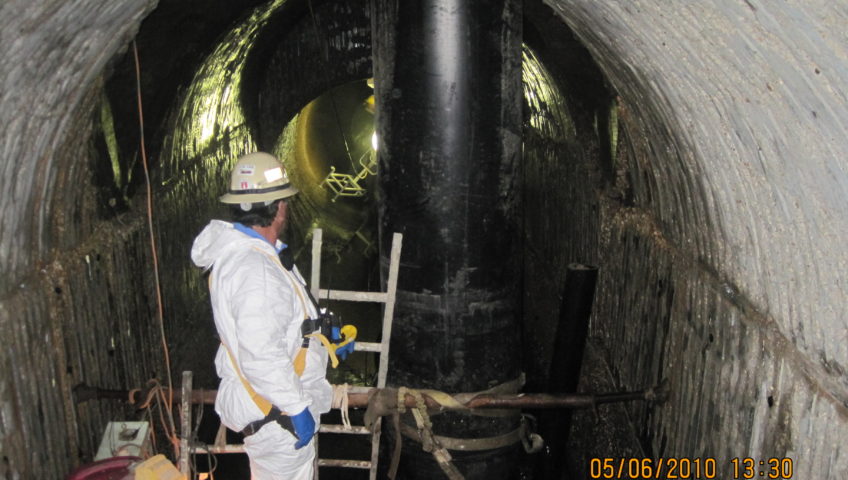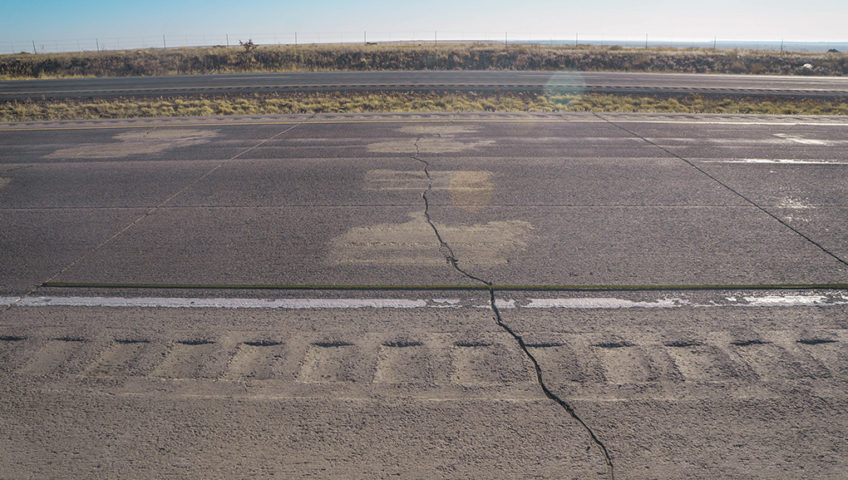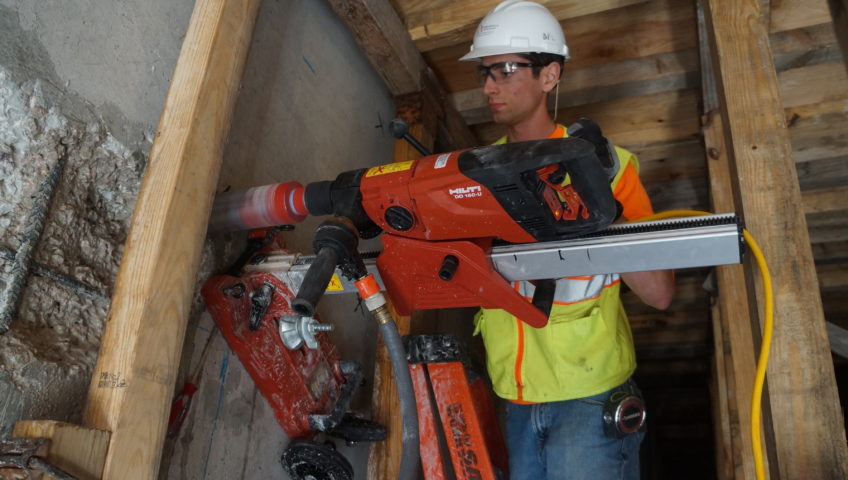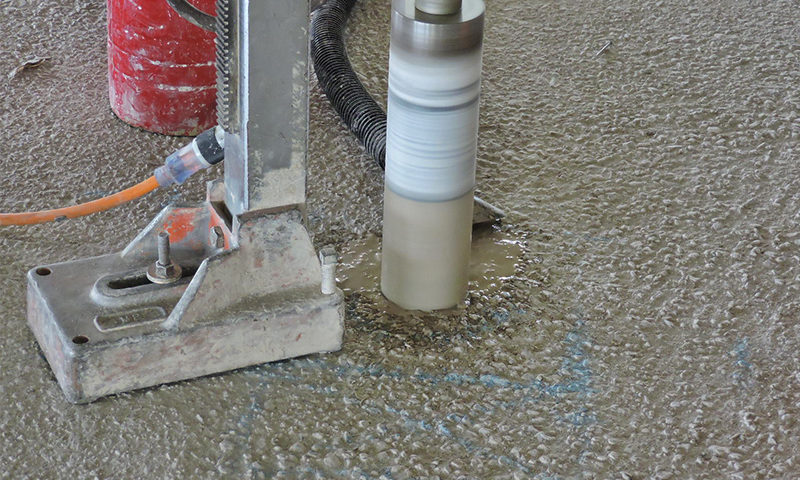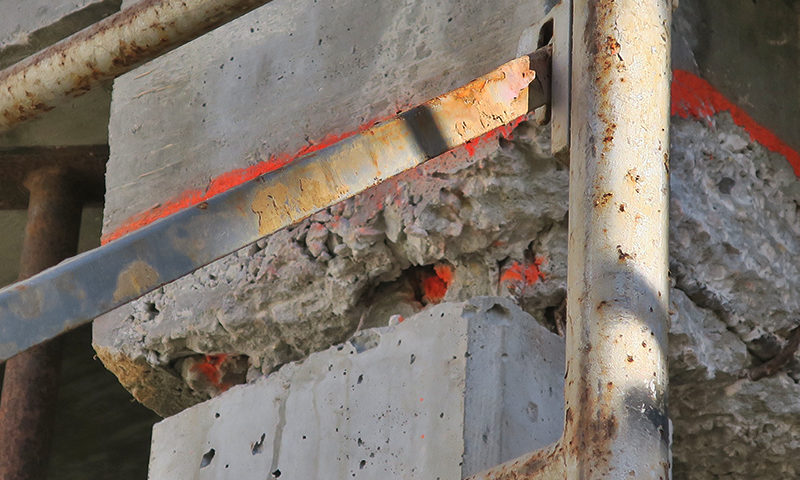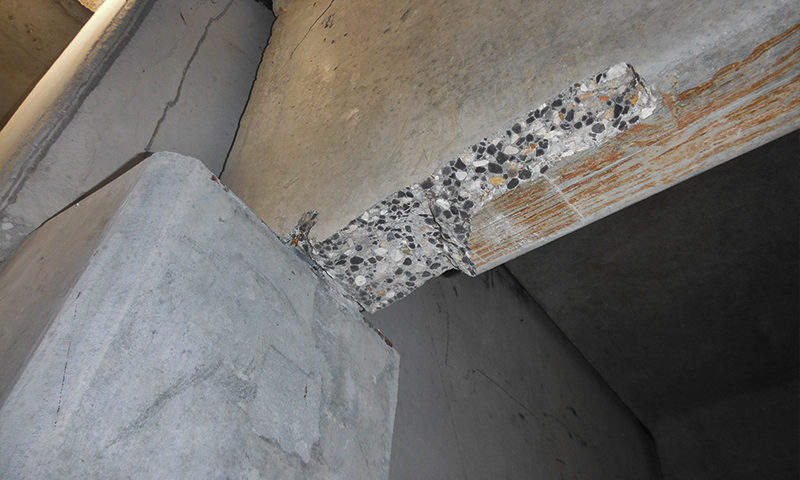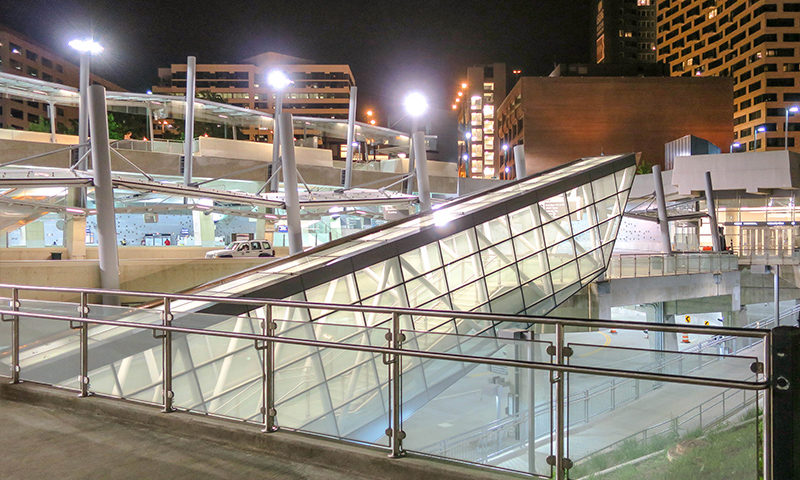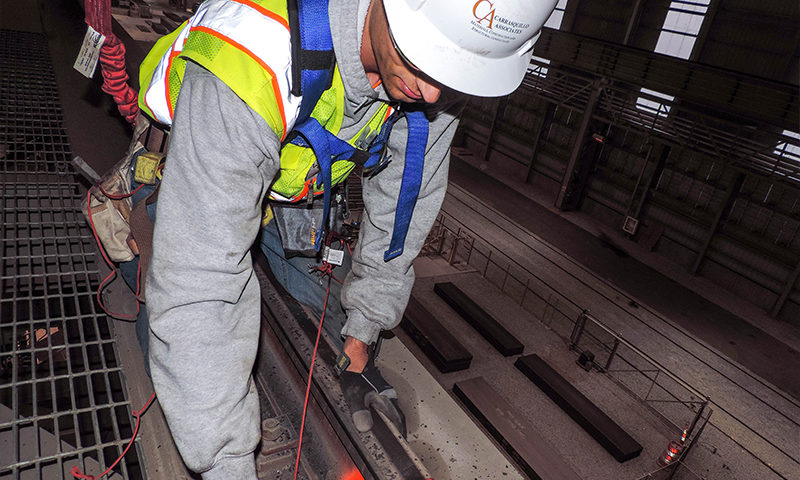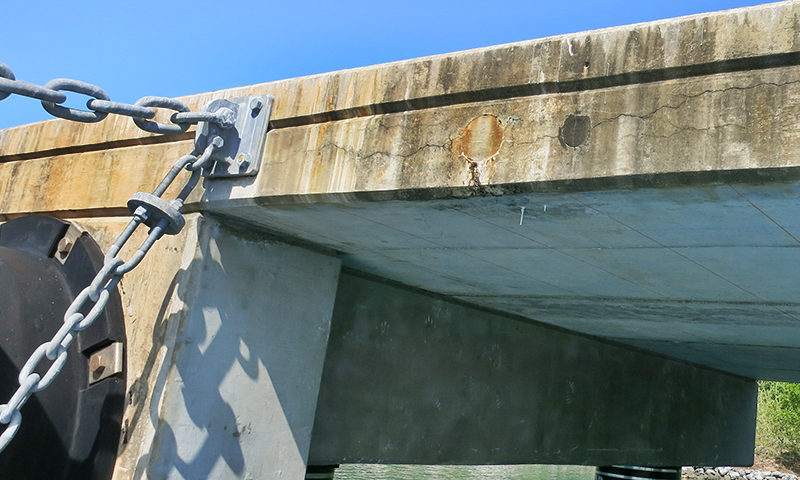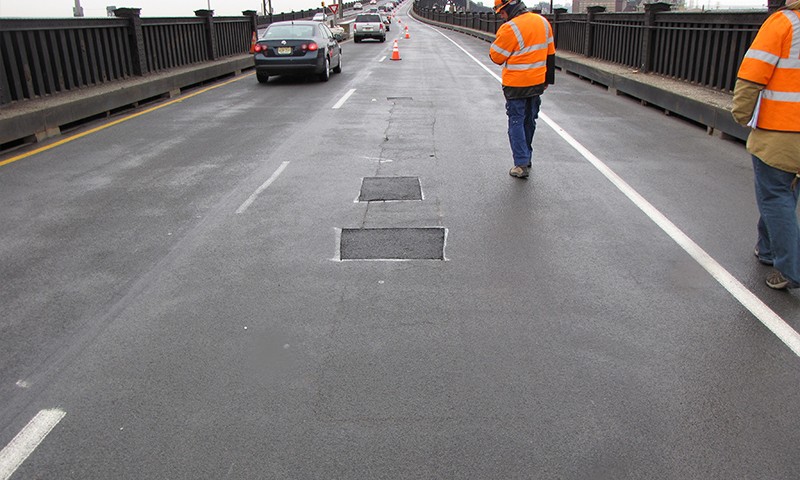The Govalle Tunnel is an approximately 8 mile long, 96-inch diameter, cast-in-place concrete tunnel at an average depth of 100 feet that conveys wastewater generated in central and southeast Austin, Texas to the South Austin Regional Wastewater Plant. Inspections performed by the City of Austin in 2002 identified rehabilitation needs for the tunnel system. Rehabilitation work included structural repair of large diameter and deep shafts and laterals using a cementitious repair material followed by the application of an epoxy protective system. The purpose of these repairs was to remediate the impacts of concrete deterioration due to exposure to sulfates and steel reinforcement corrosion and to protect from future deterioration. CA was retained by the City of Austin to determine the cause(s) and/or contributing factors resulting in the failure of the rehabilitation work using an approved repair mortar. Among the most relevant issues investigated were the quality of the substrate surface preparation, repair materials characteristics and properties, repair practices, and behavior, performance and curing requirements of the repair mortar at different temperatures.
